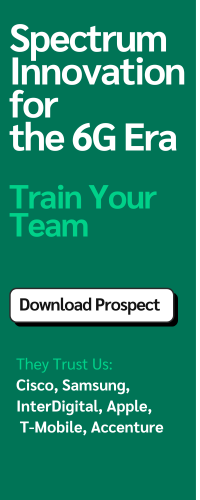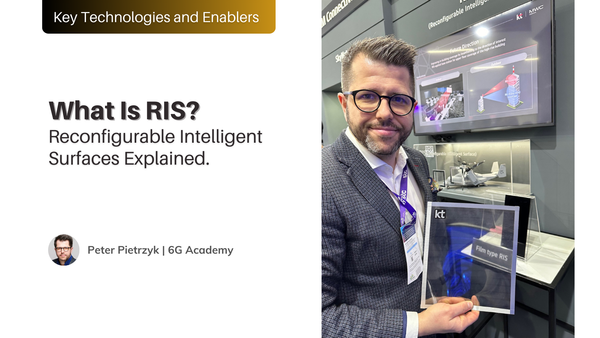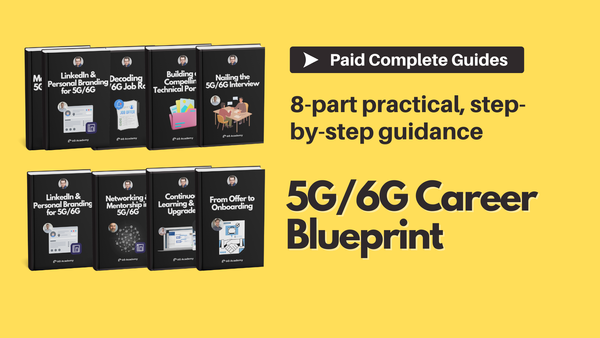Welcome to our inaugural installment of the Weekly MNO Deep Dive Series. Every Friday, we take a closer look at the technological advancements and strategic initiatives of major Mobile Network Operators (MNOs) around the globe. In this series, we’ll explore the cutting-edge developments in AI, Open RAN, 6G, and Spectrum Innovation that are transforming the telecom landscape.
Our first analysis focuses on BT Group, one of the most forward-thinking MNOs, currently undergoing a technological transformation aimed at reshaping its network capabilities for the future. By embracing AI, Open RAN, and Spectrum Innovation while contributing to 6G initiatives, BT Group is setting a new standard in telecommunications.
But how sustainable and transformative are these initiatives? And what can other MNOs learn from BT’s strategy?
1. AI: Efficiency vs. Control
At the core of BT Group’s transformation is AI Accelerator, a platform designed to speed up the deployment of AI models from six months to six days. This kind of acceleration is revolutionary, but it also raises the question: does this fast-tracked AI development come at the cost of human oversight? As BT claims it can generate £500 million in internal value over five years, the stakes are high.
Adrian Joseph, BT’s Managing Director of Data & AI, acknowledges the importance of balance: "AI Accelerator gives us a path to more rapid value,” while also ensuring that AI ethics frameworks maintain control. However, as AI becomes more entrenched in decision-making processes—especially in traffic steering and network optimization—the role of human engineers may diminish. How does the workforce adapt to this shift?
To fully understand BT’s AI initiatives, here’s a breakdown of key use cases, partners, and outcomes:
Table 1: BT’s AI and GenAI Use Cases
| Use Case | Provider/Partner | Description | Outcomes |
|---|---|---|---|
| AI Accelerator | Google Cloud, Datatonic | ML-Ops platform reducing AI deployment time from months to days. | £500M projected internal value over five years. |
| GenAI Gateway | AWS | Platform for secure deployment of GenAI use cases. | Streamlined access to various large language models (LLMs. |
| AI-Powered Traffic Management | BT’s in-house development | AI models for real-time traffic optimization in networks. | Enhanced network efficiency and reduced operational overhead. |
This approach has great potential, but one challenge remains: maintaining human oversight in increasingly automated environments. BT is clearly investing in AI ethics to ensure that the drive for efficiency doesn’t erode necessary human control over critical functions.
2. Open RAN: Vendor Flexibility or Dependency?
BT has taken bold steps toward deploying Open RAN in partnership with Nokia and Fujitsu, conducting trials in Hull, UK. This approach is intended to reduce vendor lock-in and allow for a more flexible, multi-vendor ecosystem. Open RAN promises cost savings and increased innovation by allowing operators to mix and match solutions from various vendors, but how open is it in reality?
Though Open RAN promotes vendor diversity, larger vendors like Nokia and Fujitsu still dominate the space. Smaller players may struggle to thrive in this environment, especially with the added complexity of managing AI-driven RAN optimization.
The development of RAN Intelligent Controllers (RIC)—designed to enable real-time network optimization using AI—raises concerns that operators may become dependent on vendors that can handle these advanced capabilities. Can the promise of vendor diversity in Open RAN truly be realized, or is it merely a new framework for the consolidation of big players?
Table 2: Open RAN Partnerships and Outcomes
| Partner | Focus Area | Description | Outcomes/Progress |
|---|---|---|---|
| Nokia, Fujitsu | Open RAN Deployment | Open RAN solutions trialed in Hull, UK. | Early-stage AI-driven RAN management trials. |
| Mavenir | AI-driven RAN optimization | RAN Intelligent Controller (RIC) for optimizing real-time network decisions. | Increased flexibility for multi-vendor ecosystems. |
| O-RAN Alliance | Open RAN Standardization | Collaboration on open standards for RAN interfaces and services. | Development of RIC xApps and rApps for various use cases. |
BT’s trials in Hull are a step toward proving Open RAN’s potential, but it remains to be seen if smaller vendors can keep up with the AI-driven demands of this new ecosystem. Operators must remain cautious in balancing vendor flexibility with over-dependence on a select few partners.
3. 6G Vision: Beyond Faster Speeds
BT’s involvement in the 6G-TakeOff project positions it at the cutting edge of next-generation networks. Collaborating with 22 partners, BT aims to create a 6G network that integrates terrestrial, satellite, and aerial infrastructure. While 6G is still years away, its promise goes far beyond faster speeds—it seeks to build a more resilient network powered by AI, capable of real-time optimization and fault prediction.
However, this layered architecture comes with complexities. The inclusion of non-terrestrial networks, such as satellites, introduces new challenges in spectrum management and coordination. Will 6G’s ambition result in an unmanageable network structure? Or will AI-enabled systems be able to handle this increased complexity effectively?
Table 3: BT’s 6G Projects and Collaborations
| Project/Initiative | Partners | Key Technologies Involved | Expected Outcomes |
|---|---|---|---|
| 6G-TakeOff Project | 22 global partners, including academia and telecom vendors | Non-terrestrial networks (NTNs), AI | Seamless integration of satellite, terrestrial, and aerial networks. |
| Telco AI Platform | SK Telecom, Singtel, e& (formerly Etisalat) | AI, GenAI | Development of AI-based services like digital assistants. |
| Adastral Park Research | BT Research | AI for network fault prediction | AI-enhanced network resilience and efficiency. |
BT’s vision for 6G is ambitious and forward-thinking, but its success will depend on how well it integrates AI to manage the increased complexity of the network.
4. Spectrum Innovation: Unlocking New Potential
As 5G expands and 6G looms on the horizon, BT is also exploring new opportunities in Spectrum Innovation. Dynamic spectrum sharing, particularly for rural deployments, is becoming increasingly important for ensuring efficient spectrum use. BT has participated in trials with the UK government and Ofcom to explore spectrum-sharing models that can support both terrestrial and non-terrestrial networks.
AI will also play a significant role in optimizing spectrum usage, ensuring that networks are resilient, efficient, and capable of supporting emerging use cases such as non-terrestrial communications and satellite integration.
Table 4: BT’s Spectrum Innovation Initiatives
| Initiative | Partners/Collaborators | Focus Area | Outcomes/Progress |
|---|---|---|---|
| Spectrum Sharing Trials | UK Government, Ofcom | Dynamic spectrum sharing for 5G and future 6G | Improved spectrum efficiency and utilization in rural areas. |
| 6G and Spectrum Efficiency Research | Adastral Park, academic institutions | AI-driven spectrum management solutions | AI models for more efficient and resilient spectrum use. |
| Ongoing Spectrum Innovation Projects | 6G-TakeOff, ETSI, CEPT | Non-terrestrial and shared spectrum systems | Focus on spectrum sharing between terrestrial and satellite networks. |
BT’s proactive approach to spectrum innovation highlights its commitment to building a more efficient and scalable network. Through AI and dynamic spectrum sharing, BT is well-positioned to optimize spectrum use for both current and future networks.
5. ISAC (Integrated Sensing and Communications): The Future of Network Intelligence
One of the most exciting areas of research for BT is ISAC—the integration of sensing and communications. ISAC enables the network to not only transmit data but also sense its environment, opening up a wealth of new opportunities in applications such as radar, security, and environmental monitoring.
BT is working with 6GIC at the University of Surrey and other academic institutions to develop cross-domain sensing networks that integrate terrestrial and satellite communications. These systems will play a crucial role in non-terrestrial communications, allowing BT to develop a resilient and intelligent network that can operate in a wide variety of conditions.
Table 5: BT’s Role in ISAC (Integrated Sensing and Communications)
| ISAC Initiative | Collaborators/Partners | Focus Area | Expected Benefits |
|---|
| ISAC Research Program | 6GIC (University of Surrey), 6G-TakeOff | Sensing through communications (e.g., radar, LIDAR) | Improved precision in communication and sensing integration. |
| Cross-Domain Sensing Networks | European Union Research Programs | Multi-domain sensing and data fusion | Enhanced situational awareness and intelligent service delivery. |
| Non-Terrestrial ISAC Solutions | Satellite industry partners | Combining satellite-based sensing and communications | Optimized use of non-terrestrial spectrum for sensing. |
Conclusion: A Visionary Approach with Risks
BT Group’s approach to AI, Open RAN, 6G, Spectrum Innovation, and ISAC demonstrates a clear commitment to leading the charge in the future of telecommunications. Their initiatives represent the cutting edge of what’s possible in terms of network optimization, automation, and integration with advanced sensing technologies. However, these advancements come with challenges that other MNOs should consider before following suit.
The shift toward AI, particularly in the context of network management, introduces questions about control and transparency. BT has shown a clear focus on ethics and oversight, but as automation becomes more entrenched, there’s a risk that human engineers may lose critical oversight over core systems.
Similarly, while Open RAN promises vendor diversity, BT’s reliance on established vendors like Nokia and Fujitsu raises concerns about whether smaller players can truly thrive. The question remains whether Open RAN will deliver on its promises or simply result in a new kind of vendor lock-in.
BT’s 6G initiatives, particularly its work on the 6G-TakeOff project, showcase a forward-thinking vision for integrating non-terrestrial networks. But the complexity of such architectures could result in more points of failure unless AI tools are sufficiently advanced to manage them effectively.
Finally, BT’s pioneering work in Spectrum Innovation and ISAC represents a bold move to enhance both network efficiency and intelligence. By leveraging dynamic spectrum sharing and integrating sensing capabilities, BT is pushing the boundaries of what telecom networks can achieve.
For other MNOs, the key takeaways are clear: balance AI automation with human oversight, approach Open RAN with caution, and be prepared for the complexities of 6G and spectrum management. Strategic partnerships are vital, but operators must ensure that these collaborations don’t stifle innovation or limit vendor diversity.
The future of telecommunications is bright, and BT Group is at the forefront of shaping it. However, as with any technological revolution, the industry must tread carefully to ensure that innovation doesn’t come at the expense of control, transparency, and inclusivity. Only time will tell if BT’s approach will lead to lasting change or highlight the risks of over-automation and complexity in next-generation networks.
Unlock Exclusive Insights and Strategic Advisory
Are you looking to stay ahead of the curve in 6G, spectrum innovation, and edge technologies? Our tailored consulting services offer a custom database of key industry players, actionable insights, and strategic advisory to guide your next move. Leverage our in-depth research to identify partnerships, optimize investments, and lead innovation.
Interested in a bespoke data and strategy package? Contact us for a consultation and explore how we can accelerate your success.

Explore Our 6G and Spectrum Innovation Course for 2025
Already selected by leading clients for early 2025, this course is designed to equip your team with cutting-edge insights on 6G and spectrum innovation. We offer the flexibility to tailor the agenda to your organization’s specific needs. Whether you’re focusing on AI-native networks, Open RAN, or spectrum sharing, we ensure your team is fully prepared for the next wave of technological advancements.
Discuss with us to customize the course for your team’s success!










